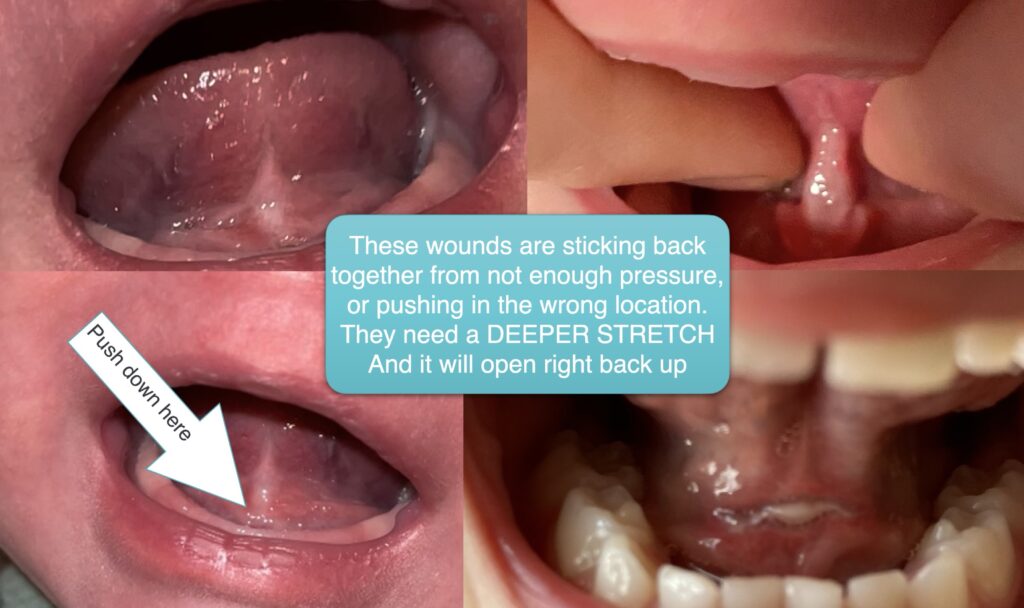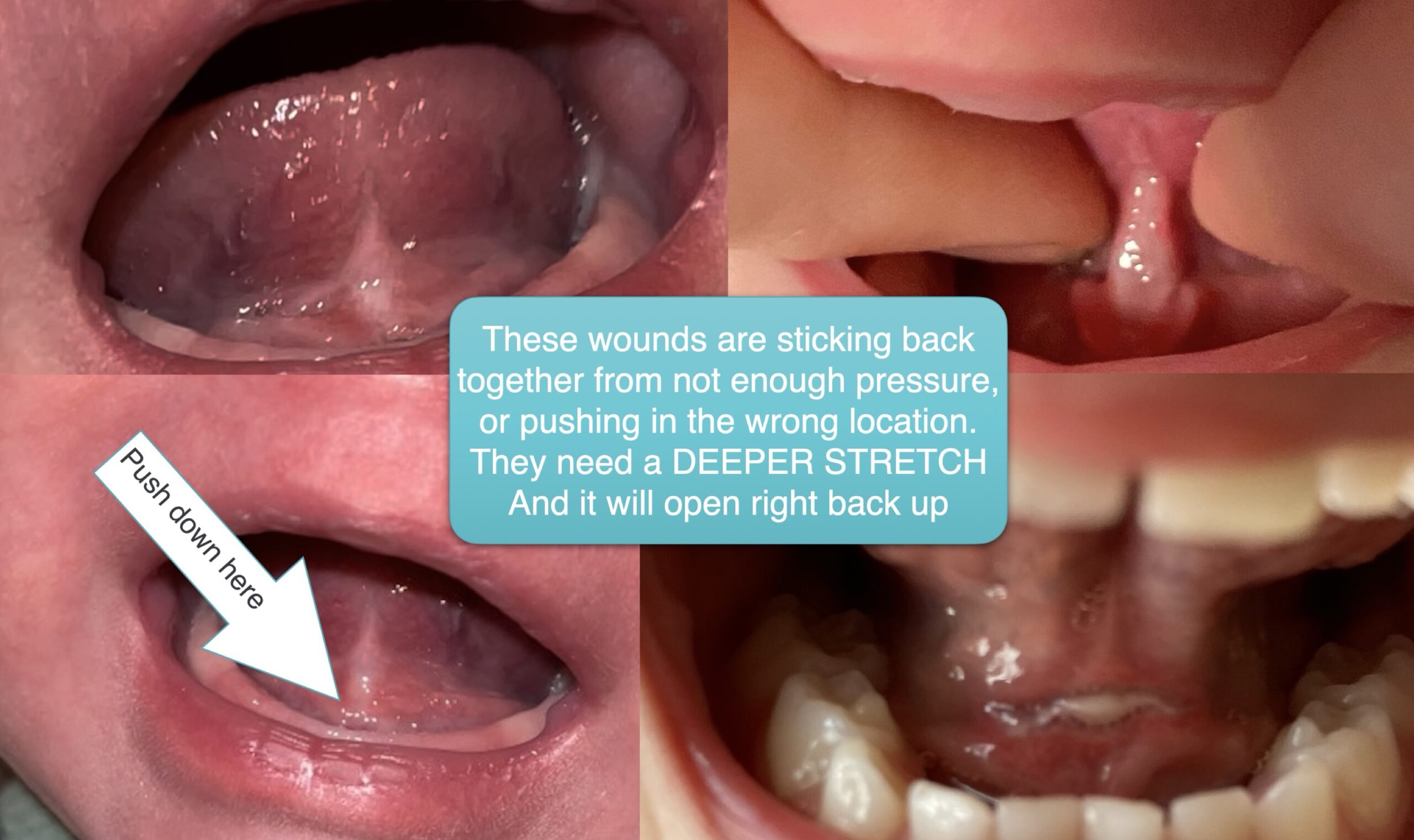One of the most common questions we hear from parents and providers is: How do we prevent reattachment after a tongue-tie release?
If the procedure was done correctly—meaning a complete release was performed, leaving a diamond-shaped wound—then proper aftercare is essential to keep the tissue from healing back together. Without the right wound care, the tongue can reattach, limiting mobility and potentially bringing back feeding, sleep, or speech issues.
Why Some Babies Still Struggle After a Tongue-Tie Clip
Not all tongue-tie procedures are performed the same way. Some providers do a simple clip or snip, which might help with some issues like reducing nipple pain during breastfeeding. However, if the tongue is still restricted and can’t move freely, problems like colic, reflux, gas, inefficient feeding (falling asleep during feeds), and poor sleep can persist.
Even when the procedure is done properly, aftercare plays a huge role in healing. If stretches aren’t done correctly—or if parents don’t apply enough pressure for long enough—there’s still a chance the tissue will reattach.
How to Do Proper Wound Care
To keep the wound from sticking back together, the key is lifting and holding the tongue or lip in the right position for enough time. Here’s how:
- Use a gloved finger to lift the tongue or lip as high as it will go.
- Make sure the wound stretches open fully.
- Hold it there for a full 5 seconds (counting slowly and steadily).
- Repeat three times a day for babies under 12 months and twice a day for children over 12 months.
- Continue this routine for four weeks to promote proper healing.
We have a video demonstration (Infants / Children) that makes it easy to follow along with the proper technique.
How to Tell If the Tongue Has Reattached
If the tongue-tie release was done properly and aftercare was followed, but you’re still unsure if healing is on track, look for these signs:
✅ If the wound heals with a horizontal “T” shape (a line crossing the wound), reattachment has likely occurred.
✅ If the tissue looks thick and tight, or the tongue can’t elevate fully, it may have stuck back together.
✅ If symptoms improved after the release but then worsened, that’s another clue that reattachment might have happened.

What Happens If Reattachment Occurs?
Before jumping to another procedure, we always try a deeper stretch at our office. This simply means applying firm, slow pressure while holding the tongue elevated for at least 5-10 seconds. If the release happened recently (within a couple of months), this can often reopen the tissue with minor bleeding.
For lip ties, stretching usually only works for about two or three weeks post-procedure. If the deeper stretch doesn’t reopen the area or requires too much force, we may consider another procedure.
When Is a Second Tongue-Tie Release Needed?
We don’t rush into another laser treatment unless it’s necessary. Our goal is to minimize discomfort for babies and children while ensuring the best long-term results. In our office, we need a laser revision less than 1% of the time.
🔹 If symptoms have returned (feeding, sleep, or speech issues worsen), and the tongue is restricted again, another release may be needed.
🔹 If mobility is still good and symptoms are gone, but there’s just a visible string, a revision is not needed.
🔹 If another procedure is required, we’ll adjust the aftercare plan to increase pressure and duration of stretches to prevent it from happening again.
The Key to Long-Term Success
If a second procedure is done, we focus on:
✅ More pressure during stretches.
✅ Ensuring the full 5-second hold each time.
✅ Strictly following the 4-week stretch routine.
✅ In-person follow-ups (we recommend two instead of just one).
Seeing your provider in person at the one-week follow-up allows us to check for reattachment early and correct any issues before they become bigger problems. If parents wait until symptoms worsen weeks later, stretching may have to be extended, which can add stress for both the child and the family.
The Bottom Line
For the best outcome, follow these steps:
✔ A complete tongue-tie release by an experienced provider
✔ Diligent, high-quality wound care and stretches
✔ An in-person follow-up to monitor healing
✔ Reach out if symptoms worsen
We want every baby and child to experience lasting results. With the right procedure and proper aftercare, our success rate is very high. If you have concerns about your child’s healing or suspect reattachment, don’t hesitate to reach out.
📞 Call us at 205-419-4333 or send us a message—we’d love to help your child thrive!





